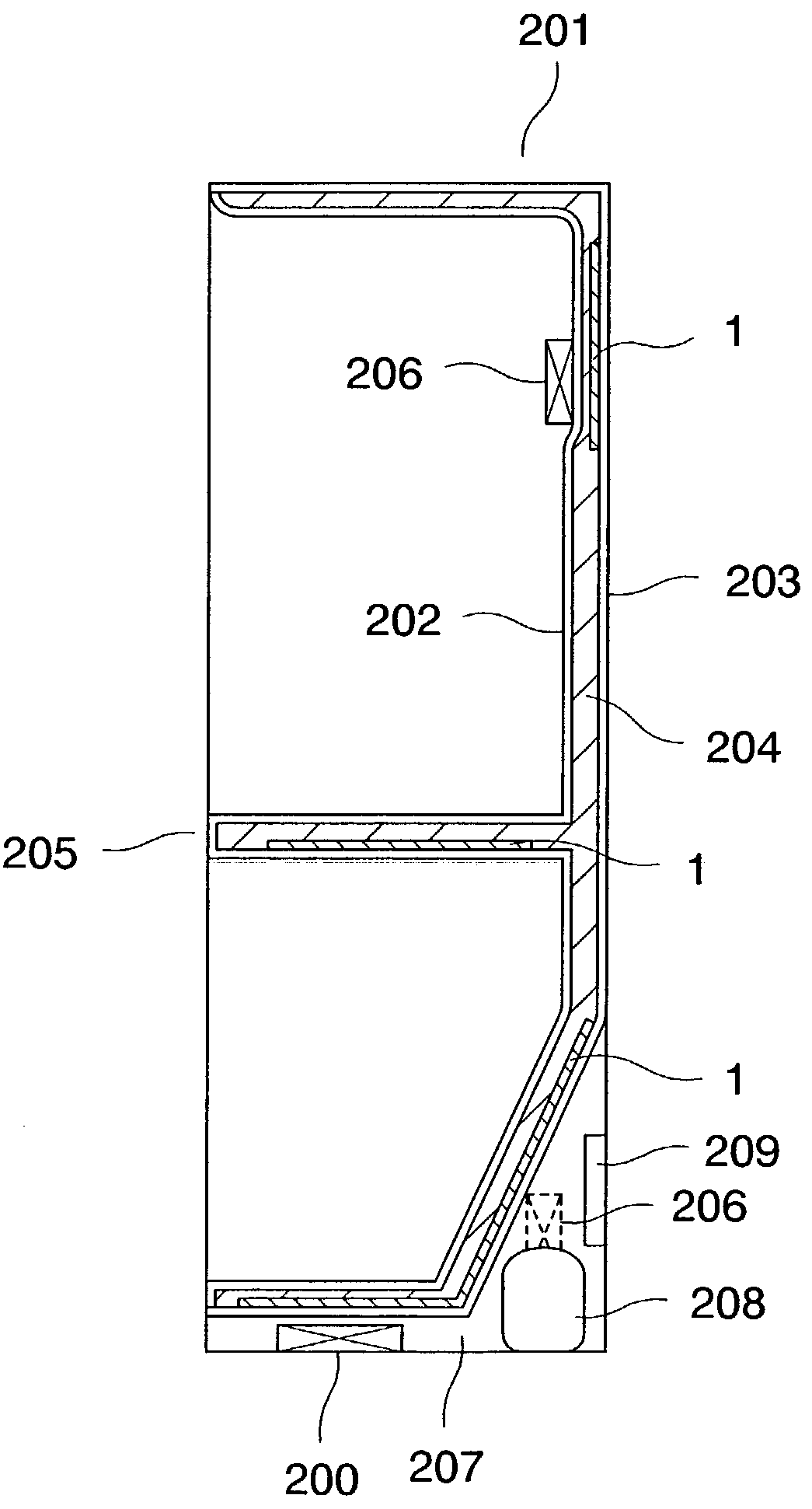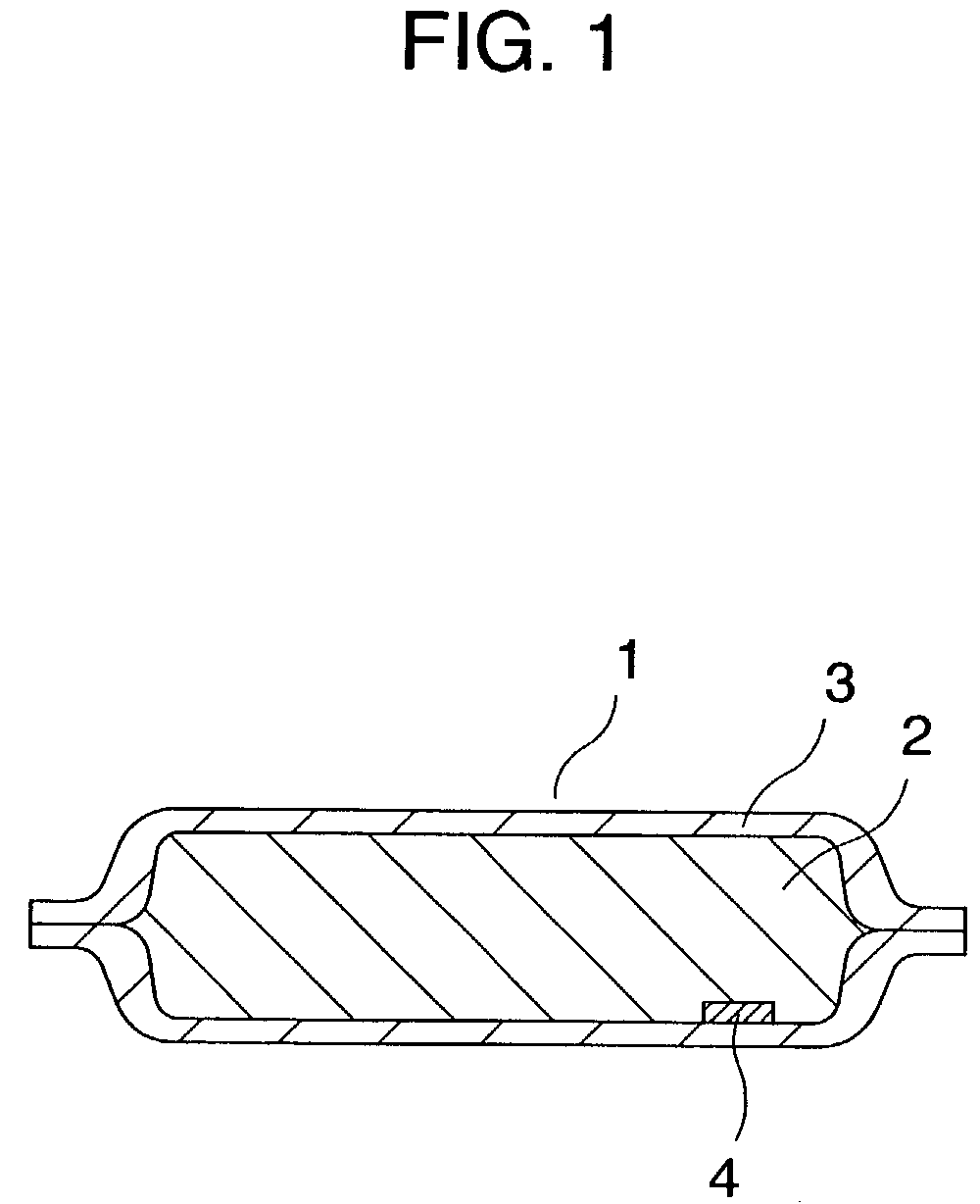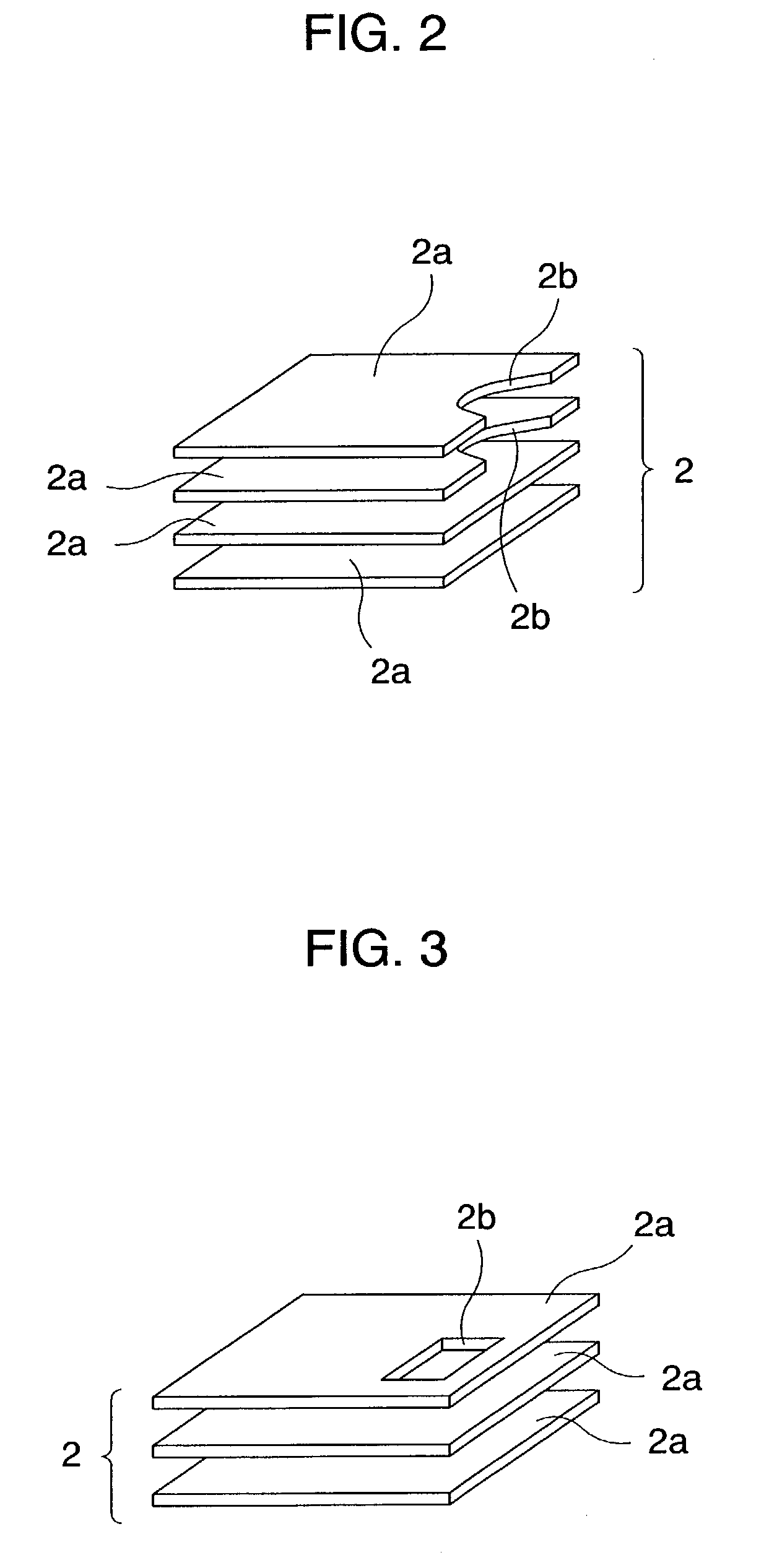Refrigerator
a vacuum heat insulation and refrigerator technology, applied in the field of heat insulation boxes, can solve the problems of difficult practical use, unavoidable energy saving in electric appliances, and disclosure of vacuum heat insulation devices
- Summary
- Abstract
- Description
- Claims
- Application Information
AI Technical Summary
Problems solved by technology
Method used
Image
Examples
first embodiment
[0030]FIG. 1 is a sectional view of a vacuum heat insulator in accordance with an exemplary embodiment of the present invention. Vacuum heat insulator 1 comprises core 2, enveloping member 3, and adsorbent 4.
[0031]One side of the enveloping member 3 is made of a four-layer laminated film. An outermost layer of the laminated film is a polyamide layer (16 μm in thickness) as a surface protection layer and an inner layer of the laminated film is a polyethylene terephthalate layer (12 μm in thickness). Enveloping member 3 further has an aluminum foil (6 μm in thickness) as an intermediate layer, and a high-density polyethylene layer (50 μm in thickness) for heat-sealing.
[0032]Another side of the enveloping member 3 is made of a four-layer laminated film comprising surface protection layers of a polyamide layer (16 μm in thickness) and a polyethylene terephthalate layer (12 μm in thickness), an intermediate film layer made of an ethylene-vinyl alcohol copolymer resin composite film (15 μ...
second embodiment
[0065]FIG. 6 is a perspective view of a refrigerator in accordance with a second embodiment of the present invention. Refrigerator 5 of the present embodiment uses, as heat insulator 1, the vacuum heat insulator described in the first embodiment. The refrigerator 5 has a freezer compartment 6 at a bottom and a machine room 7 at a back bottom portion. A refrigerant piping 8 is attached to outer box 9 with aluminum tapes. A rigid urethane foam (not shown) using cyclopentane as a foaming agent is filled in a space between an inner box (not shown) and outer box 9. On both side faces of the freezer compartment 6 of the refrigerator 5, vacuum heat insulator 1 produced in accordance with the first embodiment is provided. Between the vacuum heat insulator 1 on the sidefaces of the freezer compartment 6 and outer box 9, to which the vacuum heat insulator is to be attached, the high-temperature refrigerant piping 8 is provided. Moreover, the heat insulator 1 is shaped to substantially cover t...
third embodiment
[0069]FIG. 7 is a sectional view of a heat insulation box 101 in accordance with a third embodiment of the present invention. The heat insulation box 101 forming a refrigerator uses vacuum heat insulator 1 of the first embodiment. The heat insulation box 101 comprises an inner box 102 of a vacuum-molded ABS resin, an outer box 103 of a press-molded iron sheet, and a flange 104. To form the heat insulation box 101, the vacuum heat insulator 1 is provided inside of the outer box 103 beforehand, and then urethane resin is filled into a space between the inner box and outer box and foamed so as to surround the vacuum heat insulator 1 with rigid urethane foam 106.
[0070]FIG. 8 is a schematic view of the heat insulation box 101. A top wall of the heat insulation box is provided with one sheet of the vacuum heat insulator 1, as are a back wall and each of two side walls. According to a shape of the heat insulation box 101, the sheet of vacuum heat insulator 1 used for each side wall is cut ...
PUM
| Property | Measurement | Unit |
|---|---|---|
| diameter | aaaaa | aaaaa |
| thickness | aaaaa | aaaaa |
| thickness | aaaaa | aaaaa |
Abstract
Description
Claims
Application Information
 Login to View More
Login to View More - R&D
- Intellectual Property
- Life Sciences
- Materials
- Tech Scout
- Unparalleled Data Quality
- Higher Quality Content
- 60% Fewer Hallucinations
Browse by: Latest US Patents, China's latest patents, Technical Efficacy Thesaurus, Application Domain, Technology Topic, Popular Technical Reports.
© 2025 PatSnap. All rights reserved.Legal|Privacy policy|Modern Slavery Act Transparency Statement|Sitemap|About US| Contact US: help@patsnap.com



